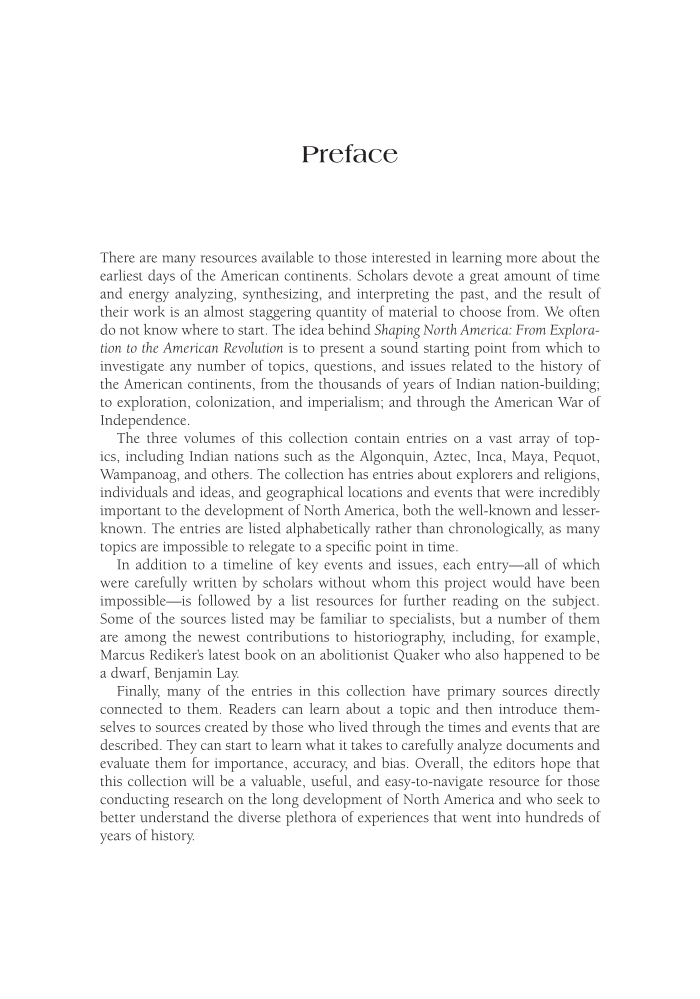Preface There are many resources available to those interested in learning more about the earliest days of the American continents. Scholars devote a great amount of time and energy analyzing, synthesizing, and interpreting the past, and the result of their work is an almost staggering quantity of material to choose from. We often do not know where to start. The idea behind Shaping North America: From Explora- tion to the American Revolution is to present a sound starting point from which to investigate any number of topics, questions, and issues related to the history of the American continents, from the thousands of years of Indian nation-building to exploration, colonization, and imperialism and through the American War of Independence. The three volumes of this collection contain entries on a vast array of top- ics, including Indian nations such as the Algonquin, Aztec, Inca, Maya, Pequot, Wampanoag, and others. The collection has entries about explorers and religions, individuals and ideas, and geographical locations and events that were incredibly important to the development of North America, both the well-known and lesser- known. The entries are listed alphabetically rather than chronologically, as many topics are impossible to relegate to a specific point in time. In addition to a timeline of key events and issues, each entry—all of which were carefully written by scholars without whom this project would have been impossible—is followed by a list resources for further reading on the subject. Some of the sources listed may be familiar to specialists, but a number of them are among the newest contributions to historiography, including, for example, Marcus Rediker’s latest book on an abolitionist Quaker who also happened to be a dwarf, Benjamin Lay. Finally, many of the entries in this collection have primary sources directly connected to them. Readers can learn about a topic and then introduce them- selves to sources created by those who lived through the times and events that are described. They can start to learn what it takes to carefully analyze documents and evaluate them for importance, accuracy, and bias. Overall, the editors hope that this collection will be a valuable, useful, and easy-to-navigate resource for those conducting research on the long development of North America and who seek to better understand the diverse plethora of experiences that went into hundreds of years of history.
Document Details My Account Print multiple pages
Print
You have printed 0 times in the last 24 hours.
Your print count will reset on at .
You may print 0 more time(s) before then.
You may print a maximum of 0 pages at a time.















































































































































































































































































































































































































































































































































































































































































































































































































































































































































































































































































































































































































